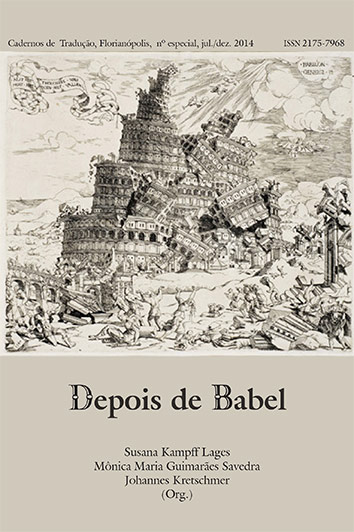Haroldo de Campos and the luciferous interpretation
DOI:
https://doi.org/10.5007/2175-7968.2014v3nespp182Abstract
The path that Haroldo de Campos takes on his reading of Dante Alighieri (Traduzir e Trovar and Pedra e Luz na Poesia de Dante) opens a new view on the work of the great Italian author. Translating parts of the Paradiso, he invokes the metaphor of light, which alludes to Robert Grosseteste vision, a great intellectual of the Middle Ages, of Dante's age. Translating, to Haroldo de Campos, is equivalent to realize a hypercritical reading, which causes a radical destabilization in the text. Tresler, tresluzir, transcriar, transparecer: these all are concepts Haroldo uses. They are the product of the coupling between reading/creating, light and the prefix trans or tres. Tresler, e.g., whose meaning may be “read in reverse”, can also be read as “losing his mind” or “talking nonsense”. There is therefore a vortical motion in diagonal or “upside down” typical of Haroldo de Campos, which highlights a tension between intellect and mystical path in Dante, revealed by the Paradise light. And this makes Harold recover Lucifer (Satan), from his etymology “which brings light”, and who, according to popular tradition, is the owner of superior wisdom, denied to the common man. A striking analogy with the Golem, of the Jewish tradition.Downloads
Published
How to Cite
Issue
Section
License
Copyright Notice
Authors hold the copyright and grant the journal the right for their articles' first publication, being their works simultaneously licensed under the Creative Commons Attribution License (CC BY), which allows the sharing of such works with its authorship acknowledged and its initial publication in this journal.
Authors are allowed to enter into separate additional contractual arrangements for the non-exclusive distribution of the journal's published version of the work (e.g., post it to an institutional repository or as a book chapter, with an acknowledgment of its initial publication in this journal).






















































